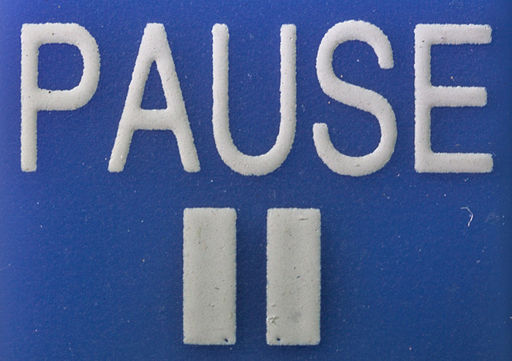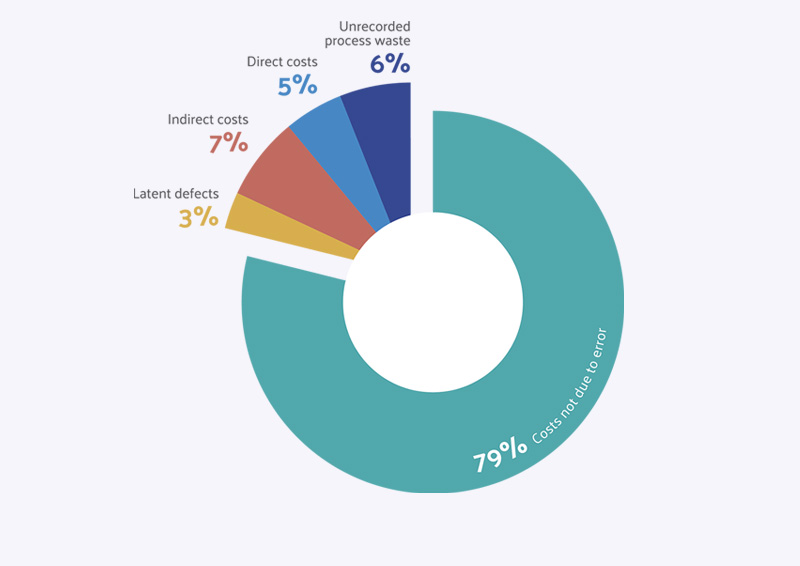Pressing pause to avoid errors
Contents |
[edit] Introduction
Tom Barton of the Get It Right Initiative discusses how the message that eliminating error significantly reduces costs will be fundamental to the survival of many organisations once we return to normal working practices.
[edit] Addressing error rates
One of the central messages of the Get It Right Initiative’s (GIRI) ongoing campaign to eliminate error in the construction industry is the importance of ‘pressing pause to eliminate error’. Sometimes it is better just to stop and take a moment to check that what we are doing is right.
But what happens when we are forced to stop suddenly, and under conditions in which we might not have access to the people, the information or even the technology that we need, to check what we are doing is right? Unfortunately, when we don’t have all of the necessary data, and we don’t revise the plan properly, we risk making things worse.
Covid-19 presents a huge challenge not only to the country as a whole, but also to our industry. There is absolutely no question that when we resume ‘normal’ working, there will be even more pressure on costs and resources, and GIRI’s message that eliminating error reduces costs significantly will be fundamental to the survival of many organisations. Whilst we are facing monumental uncertainty at the present time, the one thing that we can be sure about is that there will be a huge squeeze on costs and a drive to much greater efficiency.
[edit] The price of errors
Whilst key studies suggest the direct cost of avoidable error is around 5% of project value, our research among our industry members and their supply chains, both in the UK and internationally, revealed that the true figure is a great deal higher.
When unrecorded process waste, latent defects and indirect costs are included, the situation gets much worse. Estimates of the total cost of errors range between 10% and 25% of project cost or between £10–25 billion per annum across the sector.
When many sites have been closed for an extended period, the consequent disruption and lack of continuity is likely to create conditions in which error frequency will increase. We anticipate that the restart has the potential to cause a spike in error - exacerbating the 10 root causes of error that we identified in GIRI’s Strategy For Change report, as well as creating new causes.
GIRI members have said the main challenges they predict for the restart are:
- How they will manage and motivate staff.
- The underpricing of future works, or the ‘race to the bottom’.
- Sustainability of supply chains.
- Reduced productivity.
- The legal implications of delays.
- The potential loss of competence.
Some of the issues that the industry anticipates once work starts again in earnest are:
- Availability of materials and the potential for inappropriate or lower quality substitutions.
- Adapting to new ways of working
- Unknown errors that might have arisen due to the loss of face-to-face communications.
- Incomplete work that might take time to be identified are just.
[edit] Actions to take
So what can we do to address these issues, and is technology the answer?
While technology has a part to play, there are many other steps that we can take that will contribute to and support the drive to eliminate error.
Our research shows that many of the root causes relate to design; this is not because we have poor designers but because our culture does not enable designers and constructors to work together in a way which eliminates error.
GIRI’s Guide to improving value by reducing design error sets out 12 ways the industry can work to reduce error during the design process. These recommendations resonate almost perfectly with those who urged the industry to use this time to engage engineers ahead of the curve and allow schemes to be delivered more efficiently and effectively.
Now is the perfect time to take stock of what we are doing, reflect on how we are doing things and learn what we can do to improve them. The industry must seize the moment and press pause; we need to change. We cannot afford not to improve the way we do things.
This article was originally published on 21 May 2020 under the title, Pressing pause to avoid error has never been more important. It was written by Tom Barton, Executive Director, Get It Right Initiative and appeared on the Civil Engineering portion of the ICE website.
--The Institution of Civil Engineers
[edit] Related articles on Designing Buildings Wiki
- Articles by ICE on Designing Buildings Wiki.
- A guide to improving value by reducing design error
- Adversarial behaviour in the UK construction industry.
- Conflict avoidance.
- Construction disputes.
- Contract claims.
- Defects.
- Delays on construction projects.
- Disruption claims in construction.
- International research into the causes of delays on construction projects.
- Resilience.
- The Get It Right Initiative
Featured articles and news
The UK's Modern Industrial Strategy: A 10 year plan
Previous consultation criticism, current key elements and general support with some persisting reservations.
Building Safety Regulator reforms
New roles, new staff and a new fast track service pave the way for a single construction regulator.
Architectural Technologist CPDs and Communications
CIAT CPD… and how you can do it!
Cooling centres and cool spaces
Managing extreme heat in cities by directing the public to places for heat stress relief and water sources.
Winter gardens: A brief history and warm variations
Extending the season with glass in different forms and terms.
Restoring Great Yarmouth's Winter Gardens
Transforming one of the least sustainable constructions imaginable.
Construction Skills Mission Board launch sector drive
Newly formed government and industry collaboration set strategy for recruiting an additional 100,000 construction workers a year.
New Architects Code comes into effect in September 2025
ARB Architects Code of Conduct and Practice available with ongoing consultation regarding guidance.
Welsh Skills Body (Medr) launches ambitious plan
The new skills body brings together funding and regulation of tertiary education and research for the devolved nation.
Paul Gandy FCIOB announced as next CIOB President
Former Tilbury Douglas CEO takes helm.
UK Infrastructure: A 10 Year Strategy. In brief with reactions
With the National Infrastructure and Service Transformation Authority (NISTA).
Ebenezer Howard: inventor of the garden city. Book review.
The Grenfell Tower fire, eight years on
A time to pause and reflect as Dubai tower block fire reported just before anniversary.
Airtightness Topic Guide BSRIA TG 27/2025
Explaining the basics of airtightness, what it is, why it's important, when it's required and how it's carried out.
Construction contract awards hit lowest point of 2025
Plummeting for second consecutive month, intensifying concerns for housing and infrastructure goals.
Understanding Mental Health in the Built Environment 2025
Examining the state of mental health in construction, shedding light on levels of stress, anxiety and depression.
The benefits of engaging with insulation manufacturers
When considering ground floor constructions.
Lighting Industry endorses Blueprint for Electrification
The Lighting Industry Association fully supports the ECA Blueprint as a timely, urgent call to action.


























